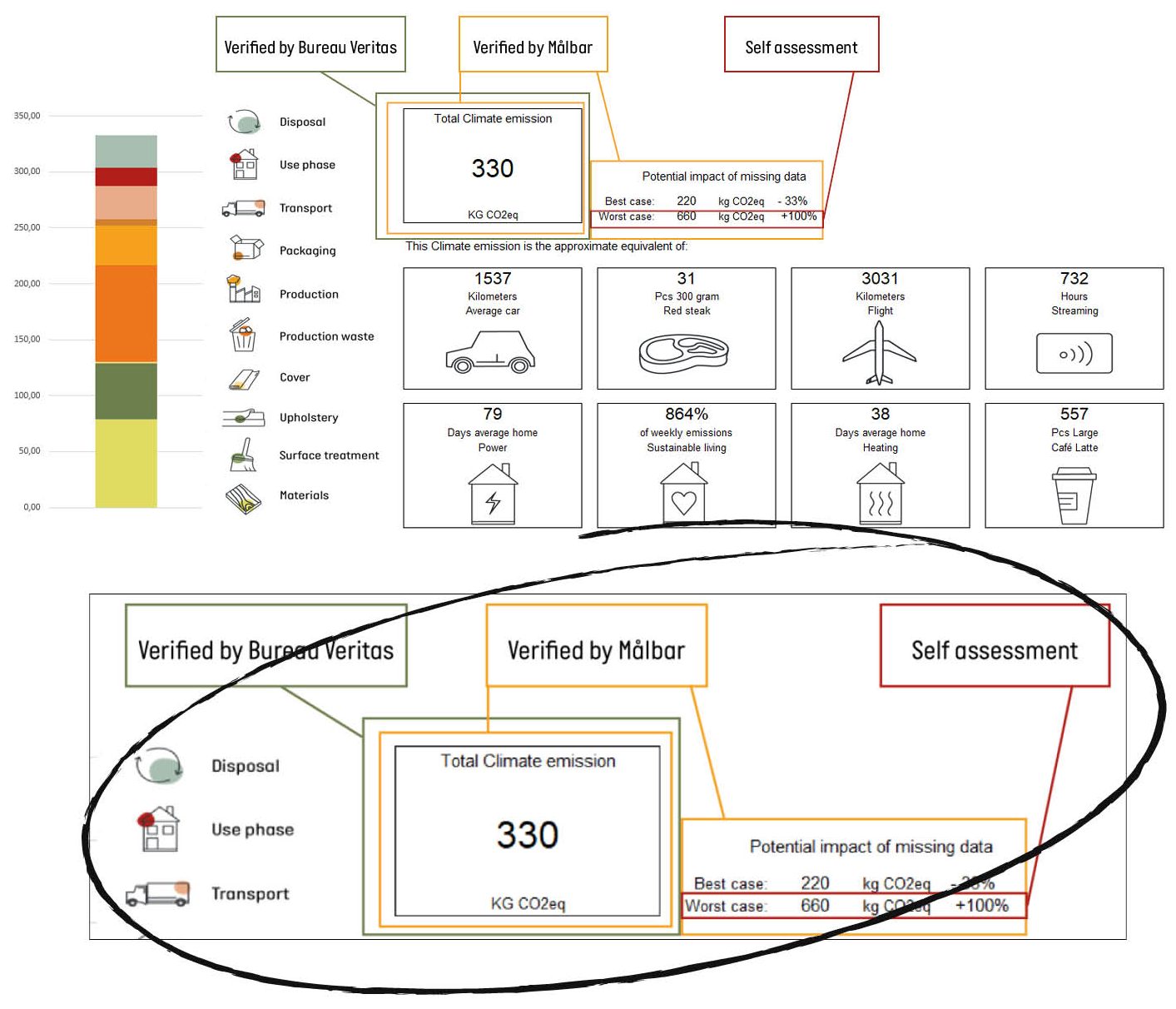Communication
On this page, we would like to clarify, what and how you may communicate about your use of our screening tool. We want to make it clear, that it is not only the CO2eq results that are interesting to share with your clients, customers, and suppliers. Our tool is able to generate and show you much more.
As consumers, we are exposed to an overwhelming amount of sustainability claims about all sorts of products and services. It is often challenging to evaluate whether the claims are true and whether they make a real difference for the sustainability of a product.
As a manufacturer, you are enriched with increasingly comprehensive legislation on production, marketing, and reporting. And you are met with still higher expectations and demands from customers and citizens in general.
With our screening tool, you will be able to measure the climate footprint of each of your products. Furthermore, you can make alternative screenings, showing the concrete difference your green initiatives and sustainable product development will have on our climate. Also, our tool generates comparisons with other products and services, making the result more relatable and easier to communicate.
Communicate about your screening results
What you may communicate about the CO2eq results generated from your product screenings depends on the level of verification. Naturally, the trustworthiness of the accuracy of the screening result relies on the validation of input data.
- If you choose not to have your screenings verified, you may communicate the worst case result.
- If you choose to have Målbar verify your screenings, you can communicate the expected CO2eq number as long as you mention the best and worst case results. It also has to be shown on the same level.
- If you have your screenings verified by third party, you may communicate the main result. You may say that it is the expected emission of your product, as long as the official report always follows the result.

Communicate about your progress
Here are examples of clear and precise messages that you can document through the Målbar screening tool.
If you have switched all your cardboard packaging from uncertified to FSC certified, you can say that you save x tons of CO2eq on an annual basis on packaging.
You may tell that by choosing another supplier of a specific component for one of your top selling products, you have cut your transport emissions by x% of CO2eq on that product.
If you have reduced your production waste on all your textiles, you can communicate about it by saying “We have reduced our climate emissions on all our products that include textiles, because we found a way to minimize the amount of leftover materials in the application of textiles. This has resulted in an annual reduction of (number) tons of CO2eq.”
You can say that by interchanging one material with another, you have reduced your emissions on a specific product by x%.
Communicate about useful insights
Using your Målbar insights as documentation and basis for the communication, you can also talk about insights you gained from the screening tool such as:
“We know now that the main part of our climate footprint derives from our production processes. Thus, we have decided that to really make a substantial reduction in our emissions, we will initiate a plan to install renewable energy sources throughout all our production facilities. We expect to be 100% self-sufficient in energy for production in 2027.”
“We recently learned that it is in fact our transportation and logistics that carry xx% of our CO2eq emissions. This has been a surprise for us, and we are now working on a detailed and ambitious plan to cut down storage time and optimize transportation routes and truck loading. We expect to roll out the plan by xxxx and to cut down at least xx% by xxxx.”